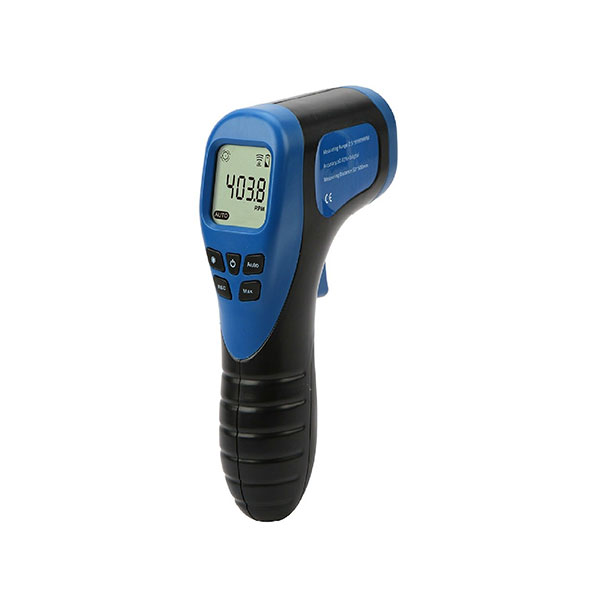The Significance of a Tachometer in Monitoring Engine Speed and Efficiency in Automotive Applications
In the realm of vehicle engineering, the tachometer stands as a crucial tool in the motorist's toolbox, supplying a direct home window right into the internal operations of a lorry's engine. Past its function as a simple gauge of revolutions per min (RPM), the tachometer functions as a vital tool for enthusiasts and experts alike, supplying real-time insights into engine performance and health and wellness. Recognizing the importance of this device surpasses surface-level monitorings, delving into the elaborate relationship in between engine speed, power result, and general driving experience. As we discover the diverse function of the tachometer in auto applications, a much deeper gratitude for its effect on car dynamics and effectiveness begins to arise.
Significance of Keeping An Eye On Engine RPM
Monitoring engine RPM, or transformations per min, is a crucial aspect of automotive upkeep and performance evaluation. Engine RPM directly correlates with the speed at which the engine's crankshaft turns, showing how promptly the engine is running - tachometer. By keeping track of RPM, auto mechanics can examine the wellness of the engine, find possible concerns, and fine-tune performance. An unusual RPM reading may indicate problems such as engine misfires, faulty ignition system, or problems with the fuel delivery system. Constantly high RPM readings can show hostile driving routines or the demand for a higher gear shift to boost gas efficiency.
Additionally, keeping track of engine RPM is necessary for efficiency assessment in auto racing and high-performance automobiles. In summary, monitoring engine RPM is not only essential for identifying issues yet likewise for optimizing engine performance in various vehicle applications.

Benefits of Real-Time Information
In vehicle applications, real-time data plays a crucial role in giving instantaneous understandings right into the performance and problem of the car. By constantly keeping an eye on numerous parameters such as engine speed, temperature level, fuel consumption, and much more, real-time information supplies various advantages that add to enhanced performance and safety and security when traveling.
One considerable advantage of real-time data is its capacity to sharp motorists and technicians to any kind of anomalies or issues immediately. This proactive method enables fast recognition of possible troubles, permitting for prompt interventions to avoid additional damage or breakdowns. In addition, real-time information helps with efficiency optimization by providing instant comments on driving behaviors and engine efficiency. Chauffeurs can adjust their behavior in real-time based on this information to achieve far better fuel economic situation and prolong the lifespan of their vehicle.

Moreover, real-time information plays an essential duty in modern-day automobile diagnostics, enabling professionals to rapidly identify and resolve breakdowns. This results in lowered downtime, lower upkeep prices, and ultimately, enhanced overall lorry integrity and longevity (tachometer). By utilizing the power of real-time data, automotive stakeholders can make educated decisions that positively influence both the efficiency and durability of the vehicle
Effect on Gear Shifts
Efficient gear shifts in auto applications substantially influence general efficiency and driving experience. The tachometer plays a crucial role in optimizing equipment shifts by giving real-time engine speed information to the motorist. When approaching the redline on the tachometer, it signals the chauffeur to upshift to protect against over-revving the engine and creating prospective damages. On the other hand, downshifting at the ideal moment can aid preserve the engine in its power band, making certain responsive velocity when required.
In addition, the tachometer aids in achieving smoother equipment additional resources transitions, specifically in hands-on transmissions. By keeping track of engine rate, vehicle drivers can execute gear shifts at the optimal RPM array, decreasing jerking motions and reducing wear on the transmission parts. This accuracy in equipment adjustments not just improves driving comfort yet also adds to sustain effectiveness.
Enhancing Fuel Efficiency
Offered the crucial duty the tachometer plays in optimizing gear shifts for efficiency and engine health, it straight adds to making the most of gas effectiveness in vehicle applications. By providing real-time feedback on engine speed, the tachometer aids drivers in preserving the most reliable RPM array for gas economic climate. When motorists consistently keep track of the tachometer and adjust their driving behaviors as necessary, they can stay clear of unneeded gas usage caused by over-revving or carrying the engine.
In addition, the tachometer aids motorists recognize the most fuel-efficient equipment to be in at any type of given minute, stopping the engine from working harder than necessary. In conclusion, the tachometer offers as an important device in enhancing fuel effectiveness by advertising optimum driving habits and identifying areas for improvement in the vehicle's performance.

Taking Full Advantage Of Engine Longevity
The tachometer's duty in keeping an eye on engine rate and performance is crucial in guaranteeing the durability of auto engines. By using the tachometer efficiently, motorists can maximize engine longevity with conscious RPM management. Constantly click here now revving an engine expensive can result in excessive damage on vital parts, such as the pistons, valves, and bearings. Gradually, this can result in lowered engine performance and potential malfunctions. Checking the tachometer permits chauffeurs to remain within the advised RPM range for their car, avoiding unnecessary pressure on the engine and prolonging its lifespan.

Conclusion
Finally, the tachometer plays an important role in keeping track of engine speed and performance in automobile applications. By offering real-time information on RPM, it enables effective equipment shifts, boosted gas effectiveness, and made the most of engine longevity. This tool is important for keeping ideal engine performance and guaranteeing the overall capability of an automobile.